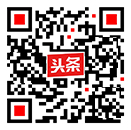[1] WILDER-SMITH A, OOI EE, HORSTICK O, et al.Dengue[J]. Lancet, 2019, 393(10169): 350-363.
[2] LIN H, WANG X, LI Z, et al.Epidemiological characteristics of dengue in mainland China from 1990 to 2019: A descriptive analysis[J]. Medicine (Baltimore), 2020, 99(36): e21982.
[3] WU W, REN H, LU L.Increasingly expanded future risk of dengue fever in the Pearl River Delta, China[J]. PLoS Negl Trop Dis, 2021, 15(9): e0009745.
[4] 逯建华,何建凡,许舒乐,等. 深圳市重点传染病指数的设计与常态化应用[J/CD]. 新发传染病电子杂志, 2020, 5(3):150-153.
[5] KAMATH SR, RANJIT S.Clinical features, complications and atypical manifestations of children with severe forms of dengue hemorrhagic fever in South India[J]. Indian J Pediatr, 2006, 73(10): 889-895.
[6] 中华医学会感染病学分会,中华医学会热带病与寄生虫学分会,中华中医药学会急诊分会. 中国登革热临床诊断和治疗指南[J]. 中华传染病杂志, 2018, 36(9):513-520.
[7] TRIVEDI S, CHAKRAVARTY A.Neurological Complications of Dengue Fever[J]. Curr Neurol Neurosci Rep, 2022, 22(8):515-529.
[8] 洪文昕,王长泰,赵令斋,等. 2013年至2019年广东省重症登革热患者的临床特征分析[J]. 中华传染病杂志, 2022, 40(6):328-334.
[9] WORLD HEALTH ORGANIZATION.Dengue: Guidelines for Diagnosis, Treatment, Prevention and Control: New Edition[M]. Geneva: World Health Organization, 2009.
[10] 中华人民共和国国家卫生健康委员会,国家中医药局.登革热诊疗方案(2024年版)[J/CD]. 新发传染病电子杂志, 2024, 9(5): 89-93.
[11] CAROD-ARTAL FJ, WICHMANN O, FARRAR J, et al.Neurological complications of dengue virus infection[J]. Lancet Neurol, 2013, 12(9): 906-919.
[12] ASIA WHOROFS.Comprehensive Guidelines for Prevention and Control of Dengue and Dengue Haemorrhagic Fever[M]. 2011
[13] PUCCIONI-SOHLER M, ROSADAS C.Advances and new insights in the neuropathogenesis of dengue infection[J]. Arq Neuropsiquiatr, 2015, 73(8):698-703.
[14] JACKSON ST, MULLINGS A, BENNETT F, et al.Dengue infection in patients presenting with neurological manifestations in a dengue endemic population[J]. West Indian Med J, 2008, 57(4):373-376.
[15] ASHRAF M, HUSSAIN SS, FAROOQ M, et al.Isolated subdural hematoma due to dengue hemorrhagic fever: Surgical intervention and review of the literature[J]. Surg Neurol Int, 2022, 13:244.
[16] JAYASINGHE NS, THALAGALA E, WATTEGAMA M, et al.Dengue fever with diffuse cerebral hemorrhages, subdural hematoma and cranial diabetes insipidus[J]. BMC Res Notes, 2016, 9:265.
[17] DOMINGUES RB, KUSTER GW, ONUKI-CASTRO FL, et al.Involvement of the central nervous system in patients with dengue virus infection[J]. J Neurol Sci, 2008, 267(1-2):36-40.
[18] PALMA-DA CUNHA-MATTA A, SOARES-MORENO SA, CARDOSO-DE ALMEIDA A, et al. Neurological complications arising from dengue virus infection[J]. Rev Neurol, 2004, 39(3):233-237.
[19] 赵杰,刘建英,程功. 登革病毒非结构蛋白NS1研究进展[J/CD]. 新发传染病电子杂志, 2018, 3(2):67-71.
[20] PAGE AV, LILES WC.Biomarkers of endothelial activation/dysfunction in infectious diseases[J]. Virulence, 2013, 4(6):507-516.
[21] WAN SULAIMAN WA, INCHE MAT LN, HASHIM HZ, et al.Acute disseminated encephalomyelitis in dengue viral infection[J]. J Clin Neurosci, 2017, 43:25-31. |




